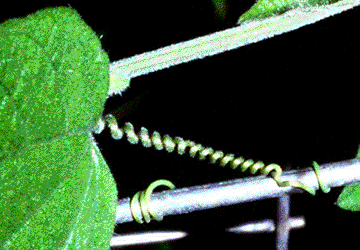This is the response of the plant to the touch. The vine plant has tendrils which girdle around various objects to make the plant to climb upwards. The tendril curls around the metal support which is known as Thigmotropism.
The nyctinasty movements are resulted from several kinds of stimuli such as touch and light. The legumes will show leaf movements in response to the day and night conditions. The leaves of Mimosa also respond to the touch and the leaves get closed when the stimulus reaches them.
The response of plants to day light and darkness during the 24-hour period is termed as photoperiodism. The photoperiodism is found to control the plant flowering. The short day plants will start flowering in the spring or fall seasons. This is because the nights are longer and day is shorter during that period. The plants that flower during summer are called as long day plants. This is because the day is longer and nights are shorter in summer. Irrespective of the length of the day, the day neutral plants flower. The length of the day is identified by a substance called as phytochrome present in the plant leaves. The molecule detects the length of the day and triggers a response.

No comments:
Post a Comment